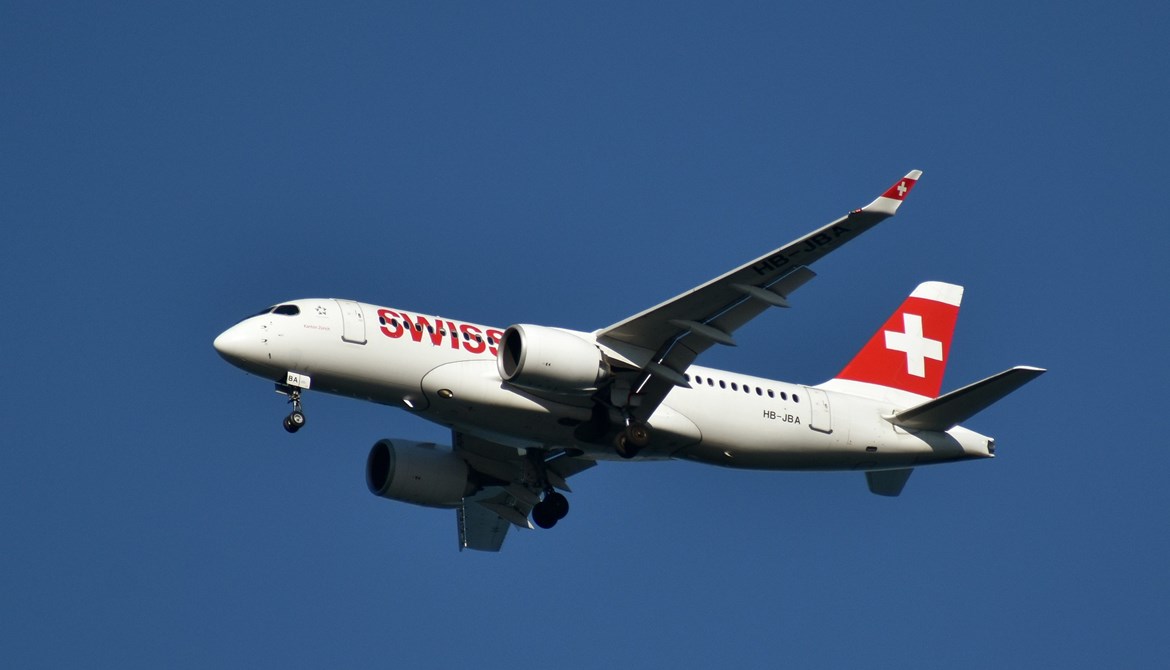Which planes are we talking about?
The C Series were originally developed by the Canadian company Bombardier. They entered commercial service on 15 July 2016, making it a relatively new aircraft. The C Series consist of two aircraft, the CS100 with 110 seats and the CS300 with 135 seats.
Due to financial concerns during its commercialization, Airbus and Bombardier signed a partnership in which Airbus acquired 50.01% of the C Series. Following this acquisition, Airbus renamed the two aircraft Airbus A220-100 and A220-300 on 10 July 2018.
The Airbus A220 is mainly used for short-distance flights. SWISS has therefore ordered 30 aircraft to serve many destinations in Europe.
Pratt & Whitney engines
The Airbus A220 are equipped with two Pratt & Whitney PW1500G engines, each producing 103.6 kN of thrust. These engines, which started being developed in 2007, are mainly used on Airbus A220 aircraft, but also for example on the Mitsubishi SpaceJet and Embraer's second generation E-Jets. This engine has the particularity of having a Geared Turbofan. This technology, relatively new in aviation, reduces fuel consumption and noise.
Recurrent problems with this engine
SWISS has already identified several incidents with the Airbus A220 and Pratt & Whitney's engines.
On 25 July 2019, during the LX-348 flight from Geneva to London, the left engine emitted a strong bang followed by flames that began to come out of the engine. The aircraft was able to land safely at Charles de Gaulle airport in Paris. A post-flight inspection showed the low pressure compressor rotor stage 1 was missing from the engine.
On 16 September 2019, during the LX-358 flight from Geneva to London, the aircraft had to land due to an engine problem. The inspection will show a hole in the low-pressure compressor case.
On 8 September 2018, during the LX-1249 flight from Stockholm to Zurich, a bang was heard by the crew and flames came out of the engine due to too low oil pressure in the engine. The exact cause of the incident remains under investigation.
As you can see, this engine has already experienced several significant incidents in a short period of time. Therefore, the Federal Aviation Administration (FAA) recommends investigations and has already suggested changing an oil supply hose to the engine.
What impact on aviation?
Airbus has already delivered 29 aircraft to SWISS, 25 to Delta, 20 to Airbaltic and 10 to Korean, to name the largest. At this time, only SWISS has grounded all these A220 aircraft for a complete inspection.
Despite the costs of grounding a fleet, SWISS has taken the right initiative to ensure safety. This prevents further incidents and protects passengers and crew members. It also sends a strong message to Airbus and Pratt & Whitney which must conduct thorough investigations to find the cause of these problems and propose a solution as quickly as possible.
Following the Boeing 737 Max issues, the aviation world is taking this kind of problem even more seriously. If it turns out that the PW1500G engines do have a design flaw, it would be likely that other airlines ground their Airbus A220 fleet.
Aviation has always been a challenging and complex environment, but as research and development have progressed, aircraft have become increasingly safe and efficient, allowing many passengers to travel safely around the world.
This type of incident shows that safety must remain a primary mission for all stakeholders, from the component manufacturers to the flight operator of the aircraft. Each actor of the process must act with responsibility to ensure safety.
Written by the ROSAS aviation team
Picture credit : swiss.com



